Roguelike Celebration: Chogue
Chogue is a chess/rogue hybrid developed by researchers at Concordia University in Montreal. You can play it online here: https://jonathanlessard.net/chogue/
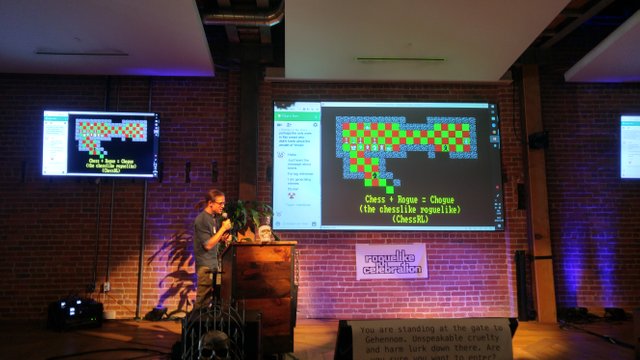
Only one of the researchers, Jonathan Lessard, was able to attend. The other, Pippin Barr, participated via chat (though due to the lag on the live stream, did so mainly by posting memes.)
Lessard and Barr are interested in studying design choices in games. Pippin has created some avant garde "games" such as it is as if you were doing work, a "work simulator" for a post-scarcity future.
They came up with a research method they call MDMA, although the acronym has multiple interpretations. ;)
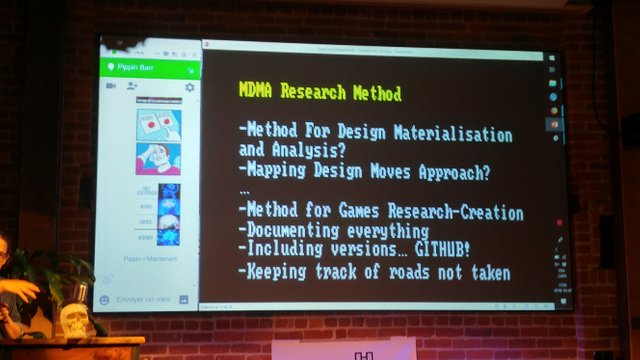
Their publication (with Rilla Khaled) Documenting trajectories in design space: a methodology for applied game design research used this approach on Pippin's earlier game. They did the same thing with "Chogue", and all the relevant material is on their Github page (https://github.com/pippinbarr/chogue): every revision of the game and its prototypes, all versions of their design documentation and their conversations about the game. This attempts to lay out how and why the design decisions were made at every decision point. This permits exploration like backtracking and trying to make a different choice.
Chogue is played by moving chess pieces around a procedurally-generated game board / dungeon level. Pieces move and capture as in chess, and player alternate turns. They thought this hybrid would be a good "miniature" model in which every design decision is important, and would help them understand both chess and Rogue better. Their self-imposed constraint was that every design choice had to come from either chess or Rogue, not any outside source.
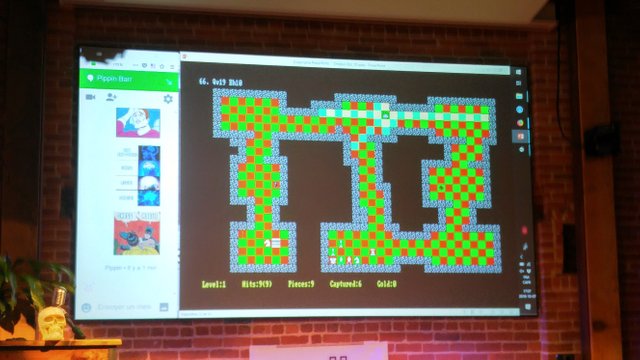
This immediately brings up a problem: what to do about bishops and knights? They can't traverse the traditional one-cell-wide Rogue corridors. So a compromise solution made all corridors two cells wide, so that knights and bishops could move along them, although somewhat painfully in the case of bishops.
They picked a smaller grid than the original rogue (but larger than chess' 8x8!) to improve visibility.
Can knights go over walls? Is a chess knight moving "over" other pieces, or squeezing through them? What is the "real" interpretation of its move? They settled on "over" so knights can in fact jump walls.
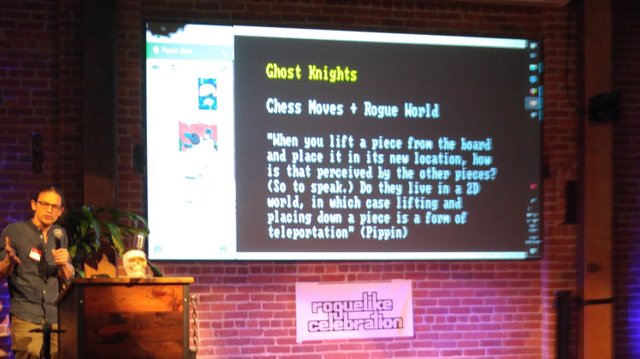
Similarly, what is the pawn promotion condition, really? Is it the top of the entire board? That means most pawns wouldn't promote, so they chose reaching any wall instead.
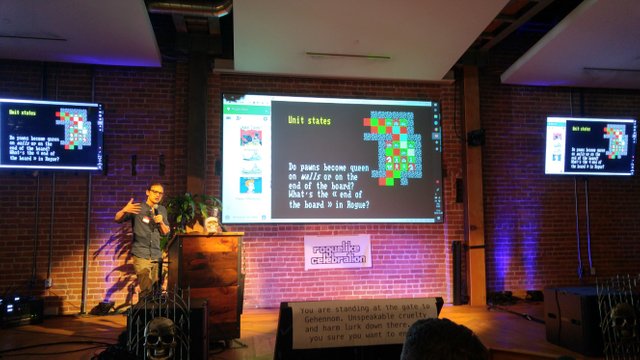
More chess/rogue decisions:
- Chess: single hit kills a piece (*), Rogue: chip away hit points
- Chess: choose one unit (*), Rogue: everybody places all their pieces on their turn
- Chess: full info (*), Rogue: fog of war/vision effectc
- Chess: entropy on both sides, Rogue: growth (higher levels, better equipment) on both sides (*)
The combination of single-hit and fog-of-war decisions, in the words of one of the researchers, turned the game into "Survival Horror". A queen or rook could come swooping out of nowhere to capture one of your pieces. This caused a problem though, that if a room was dark when none of your pieces were in it, then it went dark again after you moved a piece in and a queen stomped on it. So they had to compromise again, and rooms stayed lit once you had entered them.
They didn't know that rogue allowed a "pass" move! (I asked during Q&A.) Chess does not. So this was a Chess feature they adopted without realizing it.
Winning the game gets you a brag screen that's a pastiche of the text in the original Rogue.
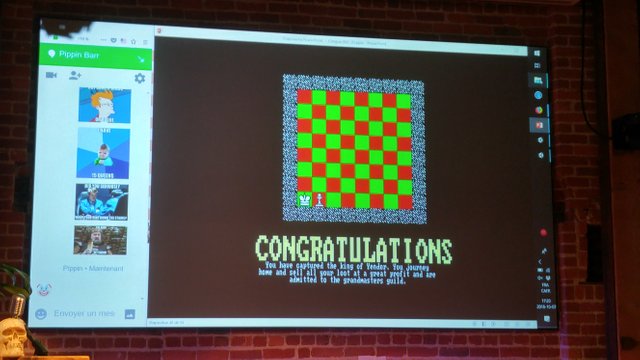
Now that the first version is done, they can go back and try other branches of their decision tree. The "Cherry Chogue" variant uses hit points instead of chess captures. They even came up with a chess algebraic notation for attacks that don't capture.
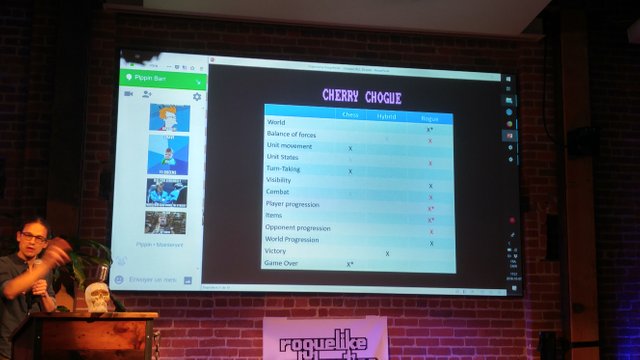
Chogue as a game
I gave Chogue a try. I think it may succeed as an experiment, but it's not very good as a game. It's basically a game of queens. Now, maybe attrition will make a difference, but the first thing to do is promote all your pawns. Despite the corridors, bishops are trash because their mobility is too restricted, and even moving a knight around is too painful.
It's also hard to pin down an enemy piece. This feels like neither Rogue nor chess. If an enemy queen comes in and captures a piece, if you don't already have the square protected then you may have to sacrifice a second piece to eliminate it. But coordinating all your pieces as a unit is extremely tedious.
The game displays moves in (extended) algebraic notation. This may actually work against the fog of war by revealing the black piece locations. But the only way to take advantage of this information would be to write it down! This is extremely immersion-breaking. Nethack and other roguelikes with a discovery mechanism remember what you've discovered, and some even help you out listing what hasn't been discovered. I think marking the pieces that have "revealed" themselves through moving makes the game more like chess and less like blindfold chess. You can justify it, perhaps not in Rogue, but in Nethack as noise or telepathy.
I was reminded a bit of of Martin Grider's hybrid game ActionChess, a cross of Chess and Tetris. Unfortunately I haven't had the chance to play that since he only released it on IOS.
I have difficulty judging the more academic side of this work. Will this documentation be useful for other researchers, or is it too idiosyncratic? Would others perform more development on the same pair of games, or pick others, and if so, do a lot of single-trajectory paths give much information? This is an interesting effort, but I'm not sure I understand what lessons have actually been learned.